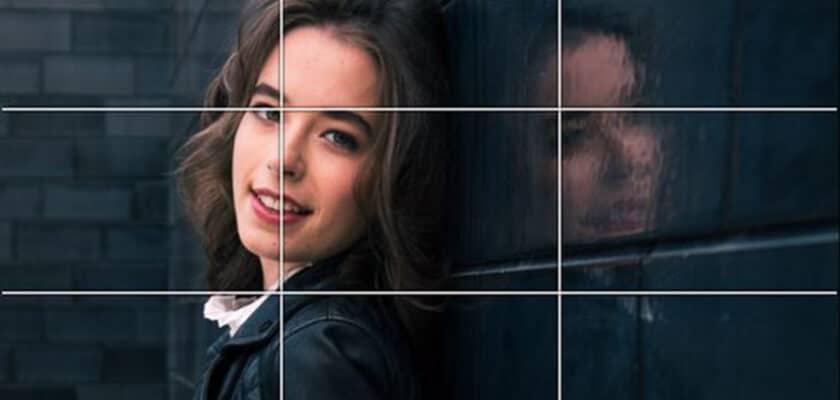Photography depends on every person’s creativity. What you like will be the best photo, but above all else, you should know some rules for capturing good photos. If you know the rules, you can take the best image, break the rules, and learn professional photography tips.
Now, I am describing the basic rules.
Keep your subject as simple as possible when Capturing Photos:
First, select your subject for the picture. If this subject is a person, tell him to stay as simple as possible and normal. Tell him to laugh naturally if necessary. Then, ask him to move a bit. Tell him I’ll take the lights to test for some test shots. He will naturally pose. Then, take the picture from a different angle as flow Professional photographyTips.
Creating Eye-Catching Images
Rule of Thirds:
This key rule is about dividing your image into a grid of thirds. The grid is both horizontal and vertical. Place your main subject or key elements along these lines or at their intersections. This creates a balanced and dynamic composition.
Leading Lines:
Use lines in your scene. They can look natural and guide the viewer’s eye to your subject.
Negative Space:
Sometimes, what you leave out of the frame is just as important. Include space around your subject. It will emphasize it and create a feeling of minimalism. It will also add balance to your image.
Lighting: The Difference Between Beginner and Pros
Harnessing the Power of Light:
Understanding and controlling light transforms a casual snapshot into a pro photo. The quality of light has a big impact on your image. This is true when using natural light or studio setups.
Working with Natural Light:
Sunlight offers beautiful illumination but changes in intensity and direction throughout the day. Learn to observe and adapt to these variations.

Remember: Don’t take images in direct sunlight during the time of Capturing Photos. If you take a picture in direct sunlight, it will create a big difference between shade and light. As a result, you can burn a lot of pictures. The evening is a suitable time for taking pictures. On a cloudy sky, you can take beautiful pictures because the light is available during the off-light time.
Basics Controlling of Studio Light :
While natural light is fantastic, studio lighting offers ultimate control. Start with one light and learn how modifiers, like diffusers or reflectors, shape it.
For Best Result, Photography needs to Focus on the Eyes:
For capturing portrait pictures eye is the important point. The eye is the focus point of portrait photography. For that reason, if you give good focus on the eye, then you can get good images.
Less is Best for simple photos:
For capturing simple images, there is no need for a more organized room or dress. You do not need the expensive tools of studio lighting. General Places, clothes, or things can make a great film.
Clipping path and image editing service at clipping path king
Advanced Techniques for Standout Images
HDR Photography:
Explain how HDR image processing lets you capture a wider range of tones. It works in scenes with high contrast. This can be especially useful for landscapes or architectural photos.
Focus Stacking:
It is a digital image processing technique. It combines multiple images taken at different focus distances. This creates a final image with a greater depth of field (DOF) than any of the source images. This is useful in cases where a single image at a chosen aperture cannot capture the whole scene in sharp focus. This happens in macro, landscape, and product photography.
Specific Style Tips:
Focus stacking is valuable in many photography genres. But you can improve your images by studying specific niches like portraits, food, or events. These ways are specialized. There are lighting setups for food photos. They enhance texture and detail. There are unique posing techniques for bringing life to portraits. And, there are essential gear tips for capturing fast event moments. The key is to explore resources and tutorials tailored to your chosen field. With focused learning, you’ll master your genre’s details. You’ll take truly stunning photos.
Technical Skills: Understanding Your Camera’s Capabilities
The Exposure Triangle: Learn how aperture, shutter speed, and ISO control image exposure. Master this relationship. Then, you’ll control depth of field, motion blur, and how your image handles low light.
Shoot in RAW Format: Shoot in RAW format if you can. Don’t use JPEG. RAW files capture far more image data, giving you maximum flexibility during editing.
A Tripod is Your Best Friend: Use a tripod to capture clear images in low light or during long exposures. Make sure it’s sturdy to prevent blurriness.
The Transformative Power of Photo Editing
Editing with Creative Tools:
Use editing software like Lightroom or Photoshop. These programs help enhance, correct, and focus images, extending your artistic vision.
Popular Editing Software:
Many photo editing software and tools are available, but some popular of them are:
-
- Adobe Lightroom
- Adobe Photoshop
- Capture One
- Affinity Photo
- GIMP
A Simple Editing Workflow:
Keep a simple workflow. It’s beginner-friendly. Most pros follow it.
-
- Import images
- Basic adjustments like exposure, white balance, contrast
- Color correction
- Cropping and straightening
- Sharpening and noise reduction
- Special effects or localized editing
Here are some additional points to keep in mind on your photography journey:
Understanding Your Audience: Always consider who you are taking photos for. It might be clients, buyers, or your social media audience. Tailoring your work to their needs is essential.
Marketing Your Skills: To succeed as a professional photographer, you must create a strong online portfolio, showcase your work on social media, and network in your industry or niche.
Never Stop Learning: Photography is a constantly evolving field. Stay curious, explore the work of other photographers, attend workshops, and keep expanding your skills to stay ahead.
Conclusion
Mastering professional photography requires a strong foundation. You need to know the essentials of composition, lighting, and technical skills. As you build this foundation, remember that editing and advanced techniques are crucial. So is a willingness to experiment. These things are key to developing your unique photographic style.
Photography is an incredibly rewarding form of creative expression. Practice the techniques discussed in this blog. Follow your artistic vision. You’ll be well on your way to capturing truly professional images that stand out.







